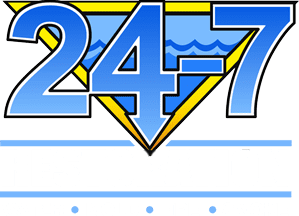Trees surrounding your Boulder, Colorado home provide shade, privacy, and curb appeal. Unfortunately, trees near your home have roots near your sewer lines. Roots are a support system for hungry trees. They’re like feelers that are constantly growing in search of nutrients and water. Since your sewer lines lie beneath the soil like tree roots, the moisture in them makes them a natural target. Even worse, if your pipes are old or leaky, they’re like a beacon and offer easy entry for growing roots.
What Happens When Tree Roots Damage Your Sewer Lines?
Tree roots are always seeking moisture. When Boulder, CO fall season rolls around, trees divert energy from leaves to root growth. These tree roots can quickly detect moisture from your sewer line activity. For example, older homes often have sewer pipes made of clay, which are particularly susceptible to tree root damage. Any crack, hole, or poorly sealed joint becomes a potential entry point for tiny tree roots. While older lines are the most easily damaged, concrete and PVC pipes can be damaged by tree roots too. When tiny root networks form within sewer lines, grease, hair, and debris from your drains and toilets form a clog in the line. When roots continue to grow, your sewer line will crack or break from the added pressure.
For most home and business owners, what’s happening underground isn’t the biggest problem. It’s what’s happening inside that causes all the damage. Learning to recognize the warning signs of tree root damage can help you avoid the catastrophic damage that can be caused by sewage and drain backup. These are some of the most common signs of tree root damage to your sewer lines and drain lines.
- Recurring clogged drains or toilets
- Gurgling sounds after you flush the toilet
- Blocked or collapsed pipes that cause clogged drains or toilets
- Sinkholes in your yard
- Foul odors around your home and property
What Are Some Prevention Techniques to Avoid Tree Root Damage?
Before you worry and refuse to have any trees on your property, consider the ways you may be able to completely avoid tree root damage. Whether you’re planning your landscape, or you’re hoping to avoid trouble, there are ways you can protect your sewer lines against tree root damage.
Invest in Professional Maintenance
Keeping your sewer lines free from debris is one way to avoid root growth inside lines. Consult a licensed professional to perform jetting services on your old clay drain lines once a year.
Make Responsible Landscaping Decisions
If you’re considering planting trees on your Boulder, CO residential or commercial property, the types of trees you choose could have a big impact on your sewer system. Some tree species have more aggressive root systems than others. When choosing new trees for your property, avoid planting these species near sewer lines.
- Sycamore trees
- Oak trees
- Willows
- Maple trees
- Elm trees
- Aspen trees
- Birch trees
Looking for trees that offer relatively little threat to your sewer lines? Try these.
- Fruit trees
- Mediterranean fan palms
- Wafer ash
- Sabal Palmetto
- Magnolias
Replace Aging Systems
Pipes built from concrete and clay are more susceptible to damage than modern PVC pipes. If jetting your drain lines once a year isn’t helping, having your aging sewer lines replaced can allow you to avoid the destruction to your home or business that comes along with major sewer pipe damage.
Tree root damage is a very common problem for all types of sewer lines. If you’ve experienced damage to your home or business due to sewage or drain backup, you don’t have to deal with it alone. 24-7 Restoration is a full-service restoration company serving commercial and residential properties in Boulder, Colorado, and the surrounding areas. If you’re facing a disaster on your property, make your first call the right one. We take care of the mess and restore your home or business to its original pristine condition.


